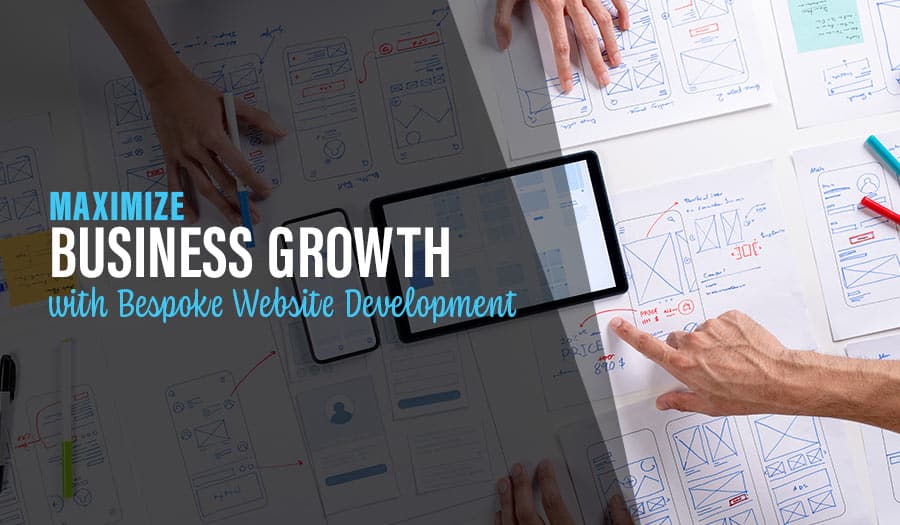Converting leads is the primary purpose of most business websites, no matter what you sell or who your customers may be. From your shiny homepage to your blog full of inbound marketing articles, your website needs to create a wide-top, smooth-transition funnel to quickly help interested leads become new customers. So naturally, conversion for e-commerce and B2B product brands is about website design.
Today, we’re here to bring you the four web design essentials to create a shopping and checkout process that inspires that conversion.
4 Essentials of E-Commerce Website Design that Converts
- Easy and Intuitive Navigation
- Quick and/or Automatic Account Creation
- Attractive Visual Design
- Carefree Shopping and Checkout
4 Essentials of E-Commerce Website Design that Converts
1. Easy and Intuitive Navigation
Navigation is a critical part of a converting website. You want to guide your leads toward conversion. But it needs to be following their own volition from start to finish if you want to get them all the way to checkout. Your website needs to carry leads along and grease the wheels of their own decision-making process by making navigation enjoyable, thoughtless, and cross-selling helpful. How easy is it for leads to look around for something they like? How easy would it be for them to find an exact product that they came specifically to buy? And how easy it is for them to quickly jump from one part of the site to another with directed intention? Put real thought into how your navigation is laid out and the experience you create from one page to the next.
Menus and Categories
Every website navigation starts with the menus and categories. If a lead wants to browse and find something, they should be able to easily find it just by following their intuition through the menu options. Each menu needs to be both compelling and concise, guiding leads down known and helpful pathways or allowing them to skip around the site investigating while all feeling like a smooth and easy experience. Be careful in your word choice for menu items and to avoid the too-many-categories clutter.
Intuitive Search Results
Some sites do page and product searches well, and others don’t. You know the difference because you’ve been out on the internet. Websites with a knack for showing you exactly what you were looking for and in a helpful results interface are far more likely to close sales and draw repeat customers than those with a clunky out-of-the-box search engine that returns search ads. If you want to convert, you need search results that inspire, with quick-loading images of the right products or a helpful list of internal pages that take leads exactly where they want to go.
Detailed Sort Filters
Search filters are the key to transforming product search results into sales. And to keep your menus un-cluttered. Sort filters allow leads to use intuitive search keywords to start with and then narrow down what they really want by the details. By price, size, colour, sub-category, and material, you name it. Whatever your products can be sorted by, give users the option to sort. Don’t forget a variety of list-order options, as well. Anything that helps leads find exactly what they want in a few minutes or less is far more likely to close a sale than flipping through endless pages of products.
Breadcrumbs
Breadcrumbs are that handy backward guide of where a user has been or where their current page lies in your navigation nested categories. Make sure you provide helpful breadcrumbs that make it easy to track back and explore parent or guide pages. Old-school breadcrumbs list the pages users have visited in order, but we have the back button for that. Modern breadcrumbs should helpfully show users the category tree of the page they’re on instead, no matter what strange route they got to the page from.
2. Quick and/or Automatic Account Creation
The modern internet user is sick and tired of making accounts, so intuitive e-commerce sites have stopped asking and have just started making the account on behalf of the customers. Of course, your customers want to be remembered, of course, they want to return to their cart and get special personal deals and not have to make a new profile every time.
Eager to Remember Customers
A smart website makes account creation and returning to a logged-in account both easy and automatic. Make your website eager to remember customers and easy to make an account on. Remembering IP addresses is a clever way to welcome leads back before they make that first critical conversion step while remembering logins and login cookies are ideal for welcoming return shoppers back graciously. If a lead builds a cart before they make an account, hold onto that cart for them and smoothly work account creation into the checkout process.
Google and Facebook
Making an account can be tedious, no matter what phase it occurs on. But there are some neat quick-account APIs available that the public now expects from all their favourite easy-to-use websites and apps. Google or social media login APIs make account creation and re-authentication incredibly smooth for your leads with no entering-a-password hassle.
Account Creation Upon Checkout
Also, be sure that when a lead does convert and buy that first purchase, an account is automatically made for them. Just request that email address or Google Syncing right next to the request for a credit card number. This rolls account-creation tedium into a routine every online shopper is used to and ensures that meticulous number-punching won’t have to be repeated, so most users will jump at the opportunity.
3. Attractive Visual Design
Every brand’s unique visual design works for them and their product. But whatever your style, that visual design needs to work. Not just on your artistic home page and landing pages but on every single page and template throughout the site. Your design should pull visitors in and make them want to click. Use photography composition theory to draw the users’ eyes and cursors toward what you want them to look at most.
White Space
Correct use of white space is key to making the design visually impactful and easy to understand at the same time. Where the colour and elements are not matters almost as much as where they are. White space used properly makes a design feel clean and well-organized. It is also critical to make your design compatible with your dynamic elements. Knowing exactly how much white space you have allows you to add floating elements like chat boxes and sidebars without obscuring your content. This is also why you want to use consistent templating.
Consistent Templating
Creating one page at a time can work at first, but users love a website that is as predictable as it is elegant. Every blog, ideally, will follow the same formatting styles. Every service page should have an easy-to-navigate structure. Templates make your pages more visually attractive, predictably navigable, and adaptable from screen size to screen size.
Responsive Mobile Design
And, of course, you’ll need a responsive mobile design to keep your website impactful and useful on every size of the screen. Most mobile responsive designs focus on screen size and, to a certain extent, control methods. A standard web page is assumed to have both a large screen and be interfaced with through a keyboard and mouse. While a mobile version of your web page is better configured for a smaller screen and tapping. Both need the ability to adapt to a large or small window/screen size. But the most important factor is that the elements all work together no matter what shape they need to take without scrolling horizontally. The key is to make your leads feel catered to with a beautiful design no matter the screen size or interface.
4. Carefree Shopping and Checkout
Cart management and checking out are often where even the best leads can be lost in the funnel. From cart-detail hassles to balking at entering the credit card, any hiccups in the finalization and payment stage can waste an entire conversion process if the lead bails out. This is why your shopping and checkout process needs to be as smooth and carefree as possible.
Cart Previews
Take all the mystery (and extra page loading) out of checking your customer’s carts. Make the cart a floating drop-down where all expenses and items are listed clearly. This makes exploration shopping so much easier for leads who want to keep track of their cart while traversing one end of your site to the other looking for wonderful things to buy. It will hold onto meticulous shoppers who want to stay apprised and ensure that users don’t walk away after clicking back over to their cart a million times to check their progress.
Smooth Checkout Process
Finally, make sure your checkout process is smooth as silk. Be completely transparent in the cart about fees and discounts. Always have a discount code ready for first-time and returning users because we all want to enter a code every time. Just to feel like we get a prize.
Minimise your return-shopper checkout process to just two or three clicks. One to submit the cart, one for payment and delivery confirmation, and perhaps one extra to re-affirm authorisation. But the third click is pushing it. Make checkout smooth, easy, and convenient even the first time through to prevent abandoned carts at the last possible moment and guide your leads through the conversion finish line.
Designing a website that converts is all about making that conversion process a joy for your leads. Make shopping smooth and easy to navigate. Make cart management something they can do from anywhere on the site with absolute transparency (and discount codes). And do everything you can to ensure that checkout doesn’t turn away a single shopper in the final stretch. For more insights in website design that is built to slide leads down that conversion funnel, contact us today!
Take your online store business to the next level with a Pixel Fish Ecommerce Website.
Check out some of our latest Ecommerce Website Design projects.
Further Reading:
How to Choose The Best Payment Gateway for WooCommerce
15 Unbeatable SEO Tips for WooCommerce
Further Information
What is business website hosting and why do I need it?
SEO: Pro’s and Con’s of Organic vs Paid Search Marketing
Which Social Media Channels Should Your Business Focus On?
5 Reasons Why Running an Online Business Has Become So Appealing
10 Signs Your Website is Out of Date
Why a Single Page Website Could Be the Perfect Launch Pad for Your Small Startup Business
How to Create a Landing Page for Your Small Business: A Comprehensive Guide



